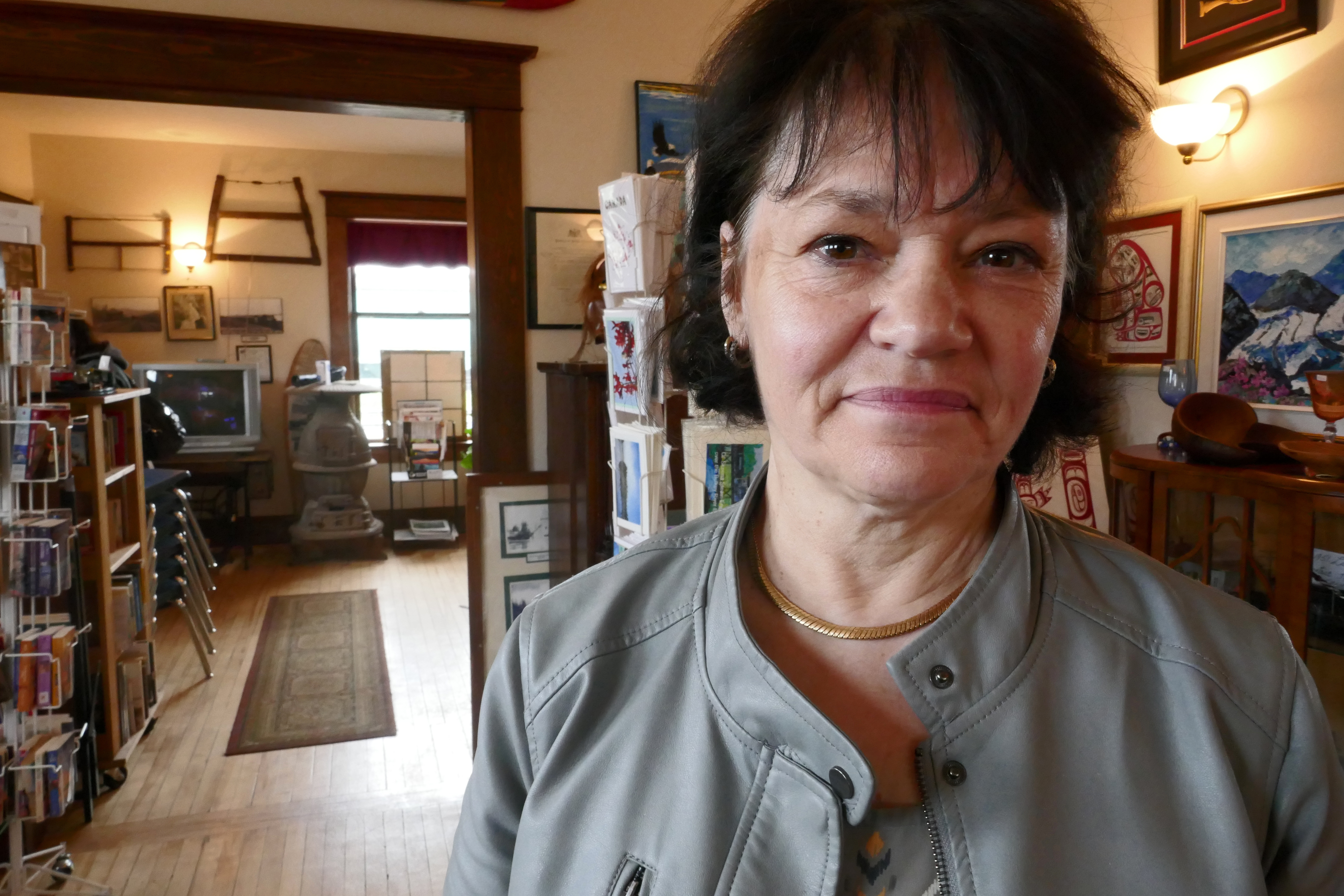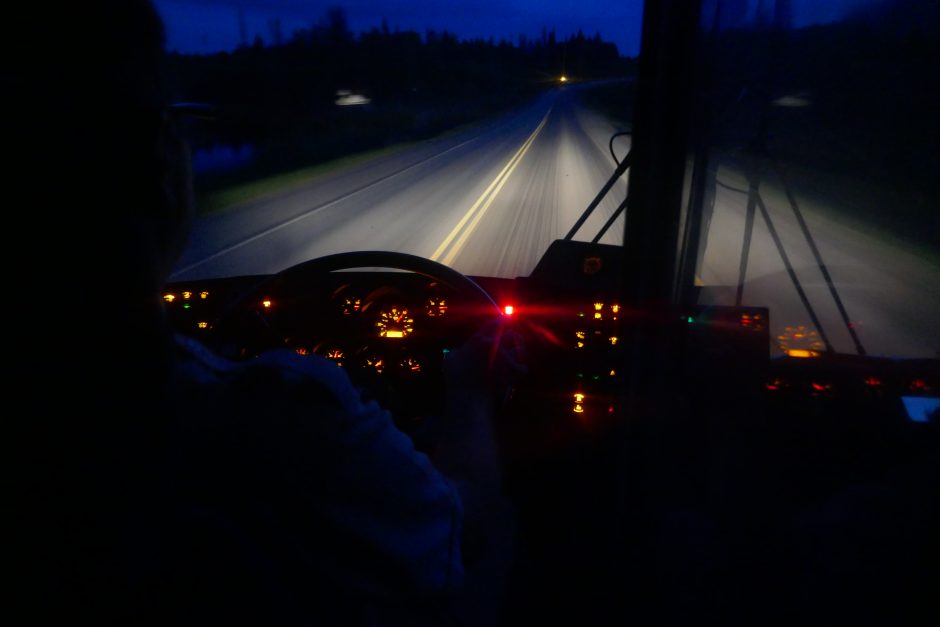June 23, 2018
Glenna Johnson burst into the Prince Rupert Friendship House, hoping to find a space on a 13-seat passenger bus to take her home to Terrace.
Johnson, 41, had just learned the Greyhound bus was no longer running a passenger bus service from Prince Rupert, on the northern B.C. coast to Terrace, about 145 kilometres to the east.
“I stayed in the cheapest hotel last night, I don’t get paid again until Friday and ... I exhausted my resources while I was here,” said Johnson wiping tears from her face.
It was a Tuesday morning, June 5. The last Greyhound passenger bus out of Prince Rupert had left the previous week.
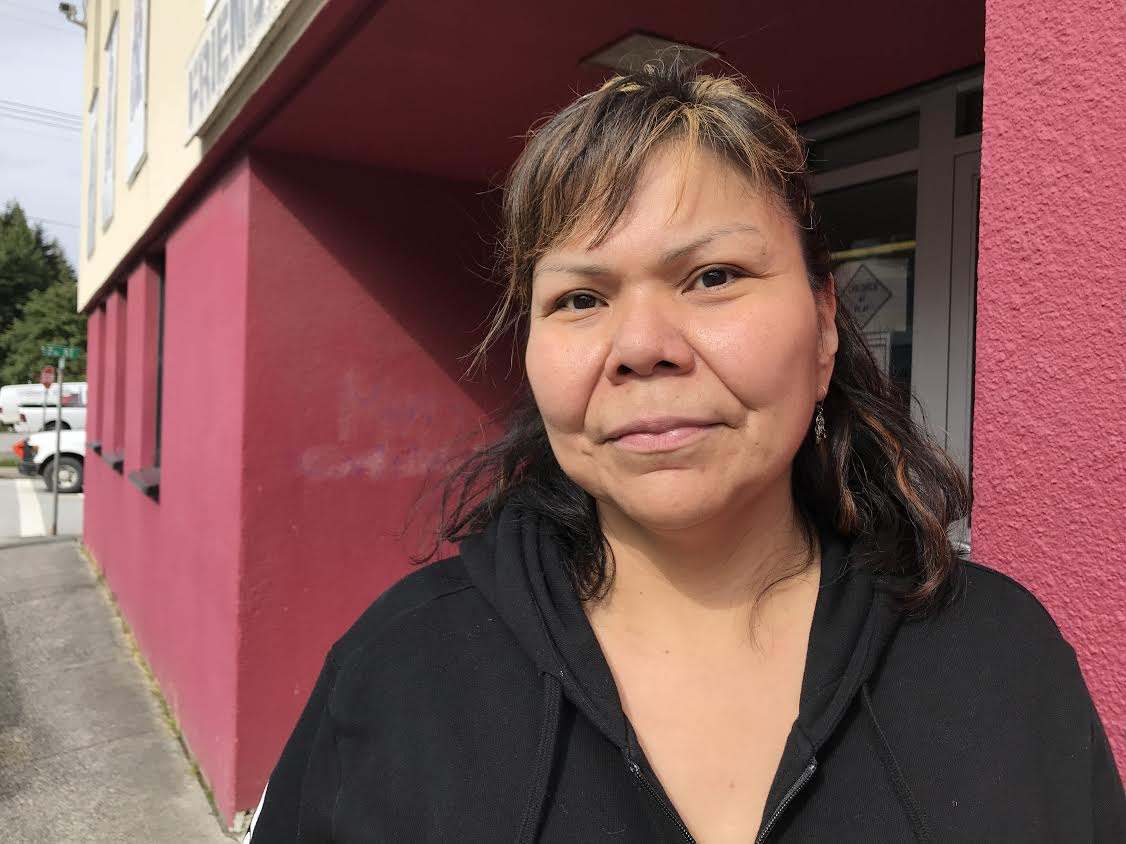
Johnson lives in Terrace and works as a cook at the Brucejack Mine near the Alaska Panhandle.
She came to Prince Rupert to help her 17-year-old son after he’d been in a fight. The two shared a hotel room until Johnson was out of money.
Now she needed to get back and had expected to take a Greyhound bus. When she found out there was no more Greyhound passenger service, she remembered hearing of the alternate bus service that would take her home to Terrace for $5.
But when she arrived at the Friendship House where the bus leaves from, she was told there may not be room for her.
“I was pretty panicky and I didn’t know what I was going to do.”
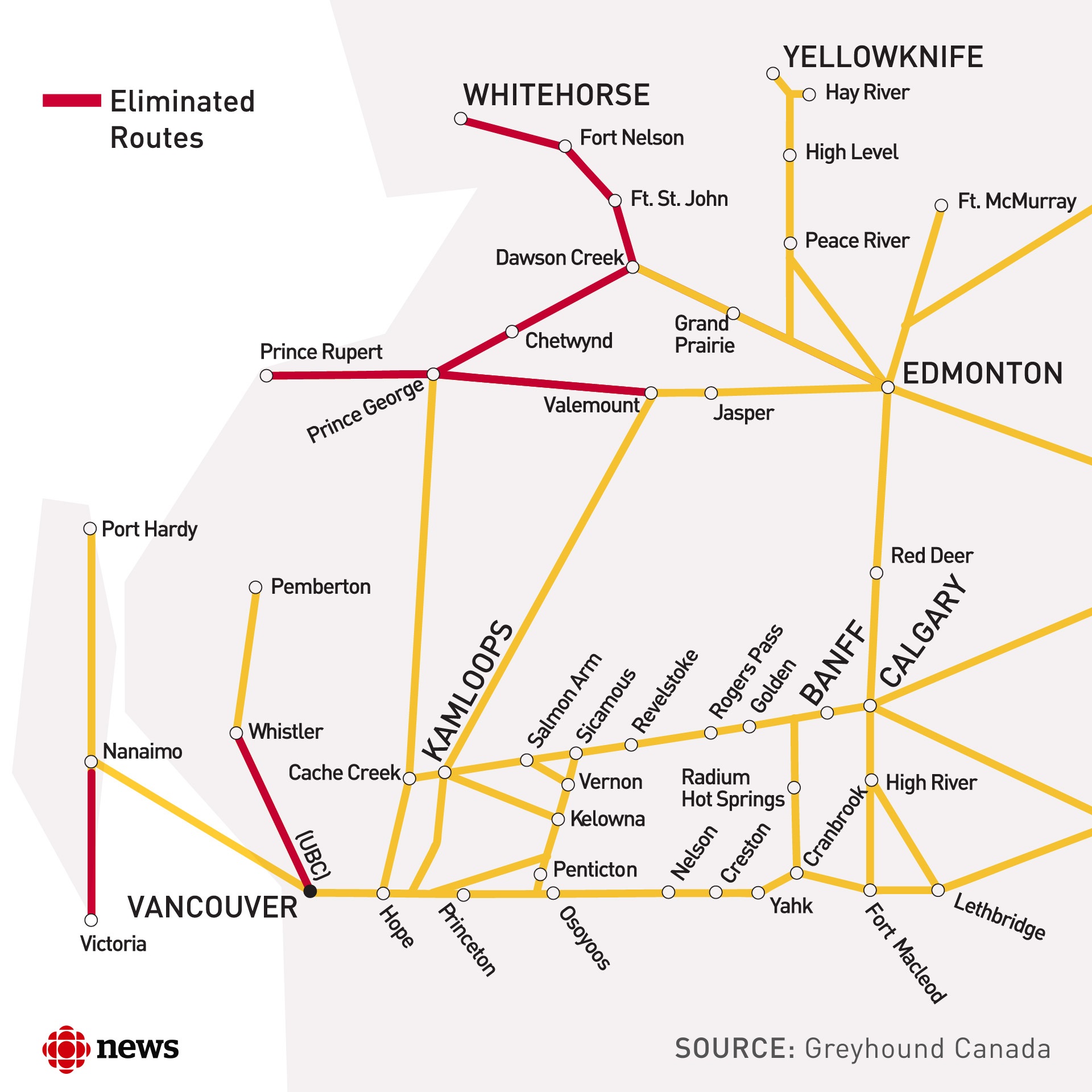
On May 31, the final Greyhound passenger bus to travel Highway 16 left Prince George for Prince Rupert. Several of its other northern B.C. routes also ended last month.
That final trip occurred nearly 10 months after Greyhound first announced plans to end passenger bus service on money-losing routes in northern B.C.
The cuts by Greyhound included several routes along the road known as the Highway of Tears between Prince George and Prince Rupert; Prince George to Valemount at the Alberta boundary; Dawson Creek to Prince George; and Dawson Creek to Whitehorse.
At least 18 women have gone missing or have been murdered along the Highway of Tears, several of them last seen hitchhiking.

When Greyhound applied to the Passenger Transportation Board last August to cease operations in the region, it argued it was losing close to $35,000 a day due to low ridership in northern B.C. and parts of Vancouver Island.
The company said it lost $70 million over the last six years, making certain runs unsustainable without government subsidies.
The application was approved in February this year to eliminate seven routes by the end of May.
In its ruling, the B.C. Transportation Board said it "cannot compel a private business to sustain significant financial losses indefinitely."
“My heart breaks for them because it’s got to be fearful” - Grainne Barthe

Johnson wasn’t the only person taken aback by the end of the service.
Others who travelled the highway that week said they had no idea how they would get to their destinations once the service ended.
Natile Grasslin lives in Fort St. James, a small community about 60 kilometres north of Vanderhoof on Highway 16, and has been catching the Greyhound every few months for the last eight years.
She regularly visits her family in Dawson Creek to help out on the family farm. On her final Greyhound ride to Vanderhoof, where she then catches a ride home, Grasslin was tearful as she said goodbye to the drivers who she has come to know.
In this video, Grasslin shares her thoughts about this final trip:
More to hitchhike
The move to eliminate these passenger routes puts several groups at risk, advocates say, including isolated First Nations communities, women, and people with disabilities.
“I think it leaves a lot of people unsafe,” said Grainne Barthe, program manager for the North Coast Transition Society.
Barthe, who works with women and children seeking emergency shelter and people addicted to drugs, believes more people will hitchhike now that there’s no daily passenger bus in the region, particularly people with low incomes.
“My heart breaks for them because it’s got to be fearful.”
In place of the Greyhound service, a patchwork of transportation options is left to service northern B.C. passengers. But it’s confusing to navigate, uncoordinated and, in some areas, unreliable.
People living in communities spread throughout the region say the loss of the daily bus will affect them and their communities.
Myrtle Patrick, 57, lives in Vancouver and said she's willing to hitchhike to get around if necessary.
Patrick, who is unemployed, took the last Greyhound on the Highway of Tears from Prince George to Vanderhoof last month to attend her niece’s funeral.
At the time, she didn’t know Greyhound was ending its northern routes. Upon finding out, she didn't know how she would return home.
"There’s going to be more deaths, there’s going to be more people missing, more people being killed because it is Highway of Tears.”

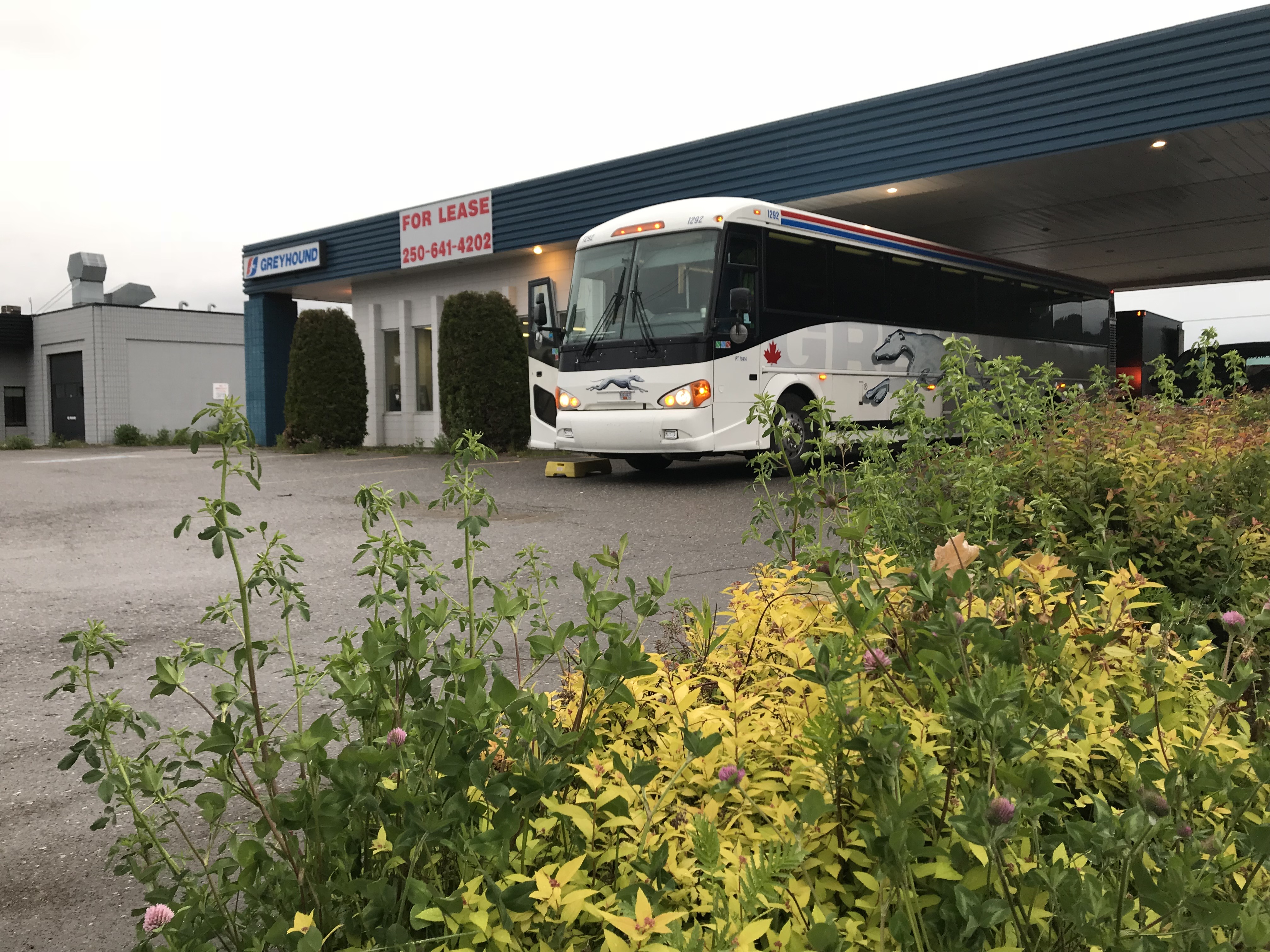
Days before Greyhound’s last run in the region, B.C. Transportation Minister Claire Trevena announced that an interim bus service, subsidized by the province, would be put in place for a full year until more long-term solutions could be worked out.
But passengers say the low-cost bus, called BC Bus North, still won’t meet their needs.
Cody Clarke, 29, has a genetic degenerative condition of his eyes called Choroideremia. Clarke wears thick glasses with two tiny flashlights fixed to each side to help him see.
Every three to six months he travels from his home in Quesnel, which is south of Prince George, to Alberta for eye appointments.
Without the Greyhound, Clarke will have to take a combination of buses that will result in lengthy layovers of more than 24 hours in Prince George.
“I think they should have had a permanent solution set up before they ever allowed Greyhound to close," Clarke said.
"You know, there are too many people that travel this way and rely on Greyhound for medical appointments.”
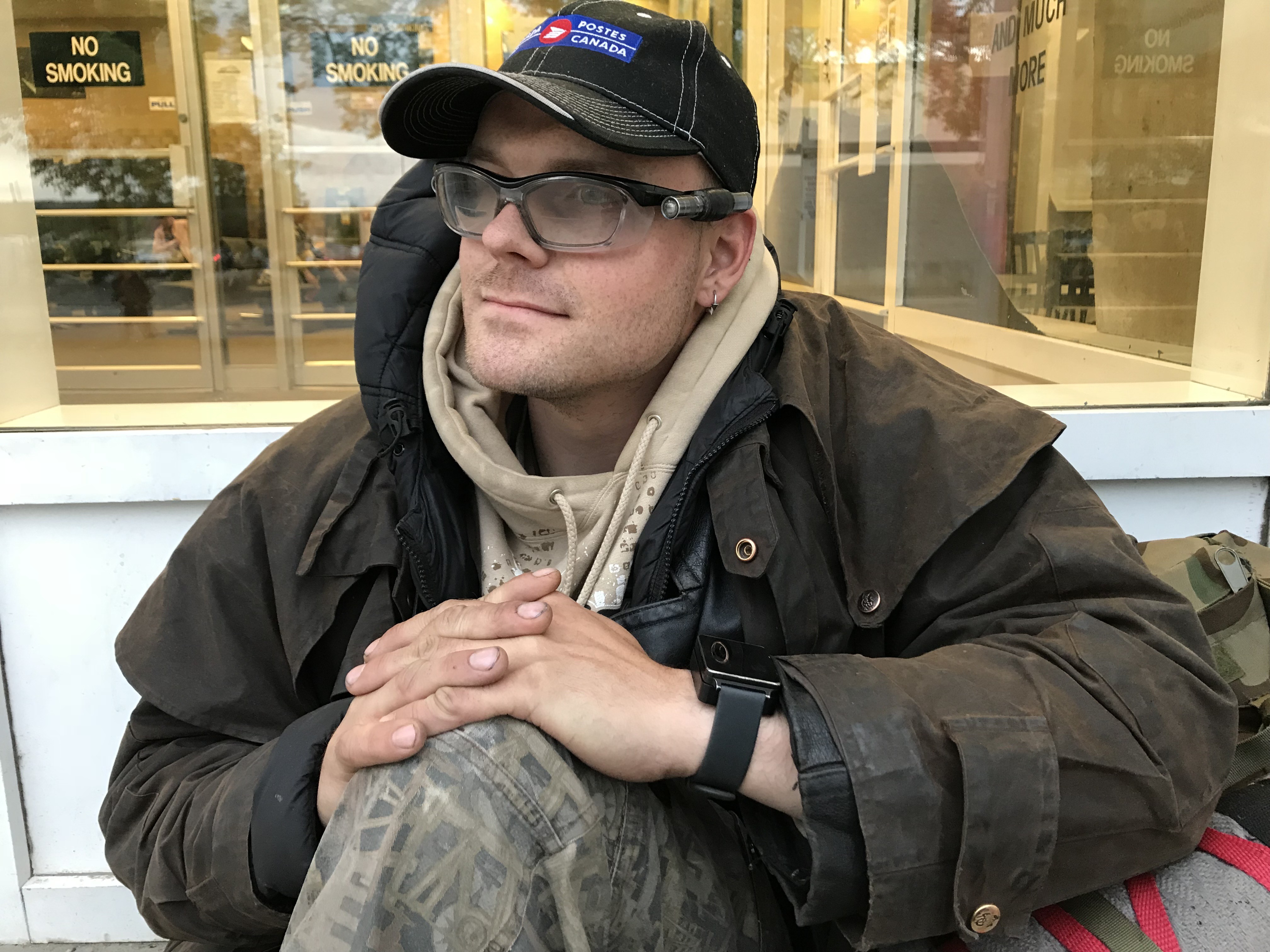
'They need reliability'
While alternate travel options are in place in northern B.C., travellers say these routes aren't well coordinated, making communities outside of Prince George less appealing for tourists and businesses.
Debbie Letawski owns and operates Little House Enterprise, a shop alongside the train tracks in Terrace, which also houses the VIA Rail station. She sees every passenger catching the train from the city, two hours inland from the coast.
Most days the train is late, she said, leaving passengers to wait as long as six hours at the station on the three days a week that it runs.
Letawski says Greyhound was the last reliable mode of transportation passing through her community.
“This is just another thing in our B.C. economy that’s going to affect us greatly because if tourists don’t think we’re reliable, they’re not going to want to take stuff like this.
"They need reliability,” said Letawski.
